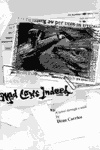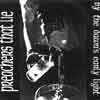Neil Gaiman, �The Sandman: Dream Country�
The fiction writing class I�m currently taking is concentrating specifically on short stories. Our textbook is an anthology of short stories, and we are encouraged to write likewise. This has been troubling, because as a whole, I don�t particularly like short stories. For the most part, they�re too short, and you feel like you�ve missed something.
On the opposite end of the spectrum, some novels should have stopped long before. One only needs to lug around Don DeLillo�s Underworld for three weeks to see what I mean. Some of the best things I�ve read manage to clock in around 220 pages, a little more than what would be considered a novella, just enough to let you know about the characters, but not long enough to make you sick of them.
And what the hell does that have anything to do with this graphic novel that I just finished reading? Patience. I�m fleshing out the ideas so you won�t feel like you missed something.
I really thought I was pretty close to finishing all the Sandman series. Boy, was I wrong. I knew it had a run of ten years, but I didn�t know how many issues they managed to squeeze out. Some of the best stories I remember, including The Doll�s House and Season of Mists, had time to unfold over several issues, which in turn gave the reader time to understand.
Dream Country, however, is not like those stories previously mentioned. The four stories collected and published in one slim volume are mostly one-shots. And the result feels, well, hurried. As far as I know, this was a monthly series, and Gaiman wrote it for its entire ten-year run, so I�m sure he welcomed the chance to pop something out really quickly and then be able to forget about it.
I�m not berating him for that. And to be fair, the first story, �Calliope� was tip-top-notch. �A Dream of a Thousand Cats,� however, felt like a rip-off of �The Warriors,� and practically used the same line: �Warriors, come out and plaaaaaaay!�
From what I can tell, Gaiman didn�t do a lot of these one-shots, as they had to pad the book with a script to one of the stories in the back. This was actually the best part of the book, with the exception of the �Calliope� story already mentioned. The script, in its art direction, shows how much control a creator has over his or her own work. Film screenplays leave most of the visual aspect to the director or choreographer, but this had suggestions on how to draw every panel, every gesture, and every facial tic or grimace. What started out to be quite dull, quickly became a fascinating behind the scenes look.

